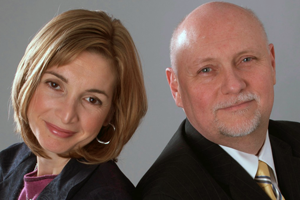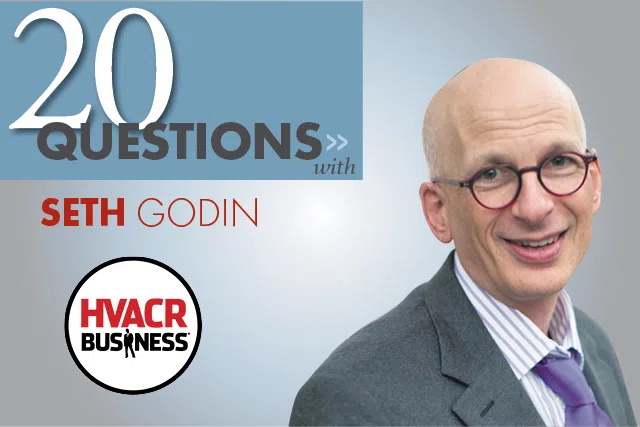Failure isn't something to be avoided at all, but rather a stepping-stone on the road to success
Failure — one of the most emotionally charged words in business and in life.
Sure, it's a great buzzword for Silicon Valley start-ups who preach failure as a way to innovate the latest and greatest billion-dollar app.
But that can't possibly work for your HVACR business … or can it?
Yes, you absolutely can tap into the power of failure to reach the next level of success in your business. But it requires a new way of viewing failure and success, and adopting strategies that might seem completely counter-intuitive.
It also requires dispelling a lot of the common, misguided thought patterns of the past. Here are five key strategies that you can implement to embrace failure and succeed.
Change Your Mental Model
Most people do everything in their power to avoid failure. When you fail, you feel like a "failure" and that's not a great feeling. The problem is that without a willingness to fail, you actually ensure mediocre results. What this comes down to is about reframing how you think about failure and success.
Most of the time we operate with a faulty model; we see ourselves stuck in the middle, with failure on one side of us and success on the other. So here we are, stuck between success and failure and having to choose one or the other.
Of course, we've been taught and trained to move only toward success and away from failure. But the new enlightened model — and the one with which you should be operating — is that you're on one end of the process. Failure, and hearing "no," is actually in the middle of that process on your way to the success you seek on the other side.
In this way, failure isn't something to be avoided at all, but rather a stepping-stone on the road to success.
Most people get to the sign marked failure and they figure they're heading in the wrong direction. They turn around and head back home, figuring that success must be back the other way. But it's not — when you reach the sign marked failure, success is almost always straight ahead.
Permission to Fail
As kids, we failed every single day and thought nothing of it. We were learning and trying new things all of the time — everything was a "first" for us. Brushing ourselves off (literally and figuratively) and getting over failures was a daily practice.
That skill slowly gets pushed out of us as we grow older and, by the time we're teenagers, we've lost or forgotten this great quality we once had.
Think about it: You had no fear of failure because, up until that point, you didn't care what other people thought about you. The obsession with perfection, fearing mistakes and failure ruins opportunities and destroys your potential.
Now that you run a business, you still need to adopt that mindset. Give yourself permission to make mistakes, mess up, hear "no" and fail. You will learn more and have far more opportunities than by insisting on perfection of yourself and your team.
An environment that insists on only perfection causes the opposite: lack of innovation, lack of creativity and fear. And no one operates at full potential with that hanging over their head.
Hear More No's
If it's true the more we fail, the more we succeed, then the immediate goal should be to intentionally increase your failure rate. Consider the fact that, to a large degree, success is a numbers game. So, the value in increasing your failure rate is to literally improve your chances at success.
From a sales standpoint, this means the more people that tell you "no," the closer you'll get to ultimate success — a "yes." Some salespeople, if they actually counted the number of times they hear "no" during a typical day or week, would be shocked to see how low the number actually is.
This is because most salespeople avoid presenting options and making offers if they assume someone is going to say "no" to them. Sure, this makes sense since we've all been taught that in sales you're always trying to get a "yes" and not a "no."
Embracing failure requires applying some new counter-intuitive ideas, and this is one of them.
There is a ton of value buried in most "no's." Getting a "no" is a chance to discover something you had not thought about. It causes you to dig further, ask more questions, gather more information and, in the end, it can help you serve your customers better and at a higher level than before.
Set goals for the number of "no's" you hear— rather than your salesperson setting the goal of having two prospects say "yes" to them, tell them to set the goal of being rejected (hearing "no") 10 times.
Imagine if the first two prospects they called on said "yes." Rather than being done (having hit their "yes" goal), they'd actually be behind because they still have 10 "no's" to go.
The other exciting aspect of this strategy is how it keeps people "in the game" when they're doing well. The irony is, when people hit their goals, they will slow down or stop, ending their hot streak. But if you keep going when the yes's of life are falling at your feet, the sky is the limit.
Learning from Failure
Benjamin Barber, an eminent sociologist, was quoted as saying, "I don't divide the world into the weak and the strong, or the successes and the failures … I divide the world into the learners and non-learners."
In one survey conducted on Linkedin.com on how business people made hearing "no" valuable, one person reported back that a "no" caused them to ask the prospect what it was that made them say "no." By asking that question, it gave them more information to continue a dialogue with their potential customer.
Being positive rather than negative about failing opens you up to a significant amount of learning. While any failure can be frustrating and deflating in the moment, it provides a process for evaluation that would have been skipped altogether without receiving it.
When you continue to value and learn from your failures, what you end up with long-term is a more effective business operation.
Celebrate Failure
It's natural to be excited about the successes in your business. If the key to success is to embrace and increase failure, however, then it only makes sense to celebrate the setbacks as well.
When is the last time you rewarded yourself (or someone who works for you) for failing? Probably never. This is also why failing continues to have its negative hold on people's thoughts and emotions.
In their book, "Whoever Makes the Most Mistakes Wins," Richard Farson and Ralph Keyes discuss the risk-friendly workplace and make the point that great leaders treat success and failure the same. They state: "Enlightened managers understand that rewarding one and punishing the other can create more problems than it solves. Therefore they approach them both with the same posture."
Like a good coach, you should take victory and defeat in stride.
If not, you will create an environment where people do not feel safe in attempting innovative ideas or trying new things and that leads to a stagnant and stale operation.
In any aspect of your business where things are not changing and growing — they are dying.
Many people may say they understand they will fail sometimes to succeed. But for most it's simply a platitude; one of those things we say but never do.
If you take the time to change how you think, and believe it's the way, you can literally start failing your way to success today. Embracing failure just could be one of the most successful things you've ever done.
 Richard Fenton and Andrea Waltz are the authors of "Go for No! — Yes is the Destination, No is How You Get There," a short powerful story written specifically for sales professionals in every industry who must learn to harness the power of "no" to be successful. To learn more, visit www.goforno.com.
Richard Fenton and Andrea Waltz are the authors of "Go for No! — Yes is the Destination, No is How You Get There," a short powerful story written specifically for sales professionals in every industry who must learn to harness the power of "no" to be successful. To learn more, visit www.goforno.com.


 Richard Fenton and Andrea Waltz are the authors of "Go for No! — Yes is the Destination, No is How You Get There," a short powerful story written specifically for sales professionals in every industry who must learn to harness the power of "no" to be successful. To learn more, visit
Richard Fenton and Andrea Waltz are the authors of "Go for No! — Yes is the Destination, No is How You Get There," a short powerful story written specifically for sales professionals in every industry who must learn to harness the power of "no" to be successful. To learn more, visit 


